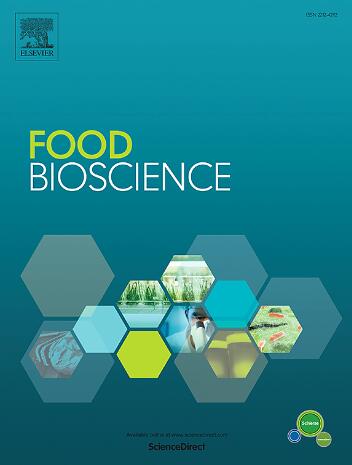Mycotoxins contamination and their possible mitigation strategies in plant-based meat alternatives (PBMAs): A review
IF 5.9
1区 农林科学
Q1 FOOD SCIENCE & TECHNOLOGY
引用次数: 0
Abstract
The global dietary shift towards plant-based nutrition, primarily motivated by health, environmental, or ethical reasons, has led to a significant increase in the popularity of plant-based meat alternatives (PBMAs). These products promise a reduced environmental footprint and address animal welfare concerns while offering nutritional benefits. However, potential mycotoxin exposure through PBMAs remains under-explored. Mycotoxins can contaminate food during pre-harvest, harvest, and storage phases. Common mycotoxins include aflatoxins, ochratoxins, trichothecenes, zearalenone, and fumonisins, posing significant health risks.This review evaluates the occurrence of mycotoxins in PBMAs and their primary ingredients and discusses the analytical techniques used for detection and various detoxification methods. The EU's Commission Regulation (EU) 2023/915 sets maximum levels (MLs) for mycotoxins in food products, but these may not fully cover PBMAs. Wheat-based PBMAs have shown significant mycotoxin contamination, according to previous publications. With alternariol methyl ether (AME) in nearly 95% of soy-based burgers, with concentrations up to 408.8 μg/kg, while mycotoxins like beauvericin (BEA) (99%) and enniatin B (ENNB) (94%) were also prevalent. Enniatins (ENN)s were detected in soy-based burgers at concentrations up to 632.6 μg/kg. The prevalence of mycotoxin occurrence emphasizes the necessity of implementing a combination of mitigation strategies such as extrusion, fermentation, and high-pressure processing (HPP), to ensure PBMAs safety. Advanced analytical methodologies are crucial to minimize mycotoxin exposure. Future research should focus on expanding the mycotoxin database in PBMAs to ensure the safety of these increasingly popular products and protect consumers.
植物基肉类替代品(PBMAs)中的霉菌毒素污染及其可能的缓解策略:综述
主要出于健康、环保或道德方面的考虑,全球膳食向植物性营养转变,这使得植物性肉类替代品(PBMA)的受欢迎程度大幅提高。这些产品承诺减少对环境的影响,解决动物福利问题,同时提供营养益处。然而,人们对通过植物性肉类替代品接触霉菌毒素的可能性仍缺乏足够的了解。霉菌毒素可在收获前、收获和储存阶段污染食品。常见的霉菌毒素包括黄曲霉毒素、赭曲霉毒素、单端孢霉烯、玉米赤霉烯酮和烟曲霉毒素,对健康构成重大风险。本综述评估了 PBMA 及其主要成分中霉菌毒素的发生情况,并讨论了用于检测的分析技术和各种解毒方法。欧盟委员会法规(EU)2023/915 规定了食品中霉菌毒素的最高含量(ML),但这些规定可能并不完全涵盖 PBMA。根据以前的出版物,以小麦为原料的 PBMA 已经显示出严重的霉菌毒素污染。其中,近 95% 的大豆汉堡中含有交替二醇甲醚 (AME),其浓度高达 408.8 微克/千克,同时,豆维素 (BEA) (99%) 和烯萘啶 B (ENNB) (94%) 等霉菌毒素也普遍存在。在大豆汉堡中检测到的烯萘啶(ENN)含量高达每公斤 632.6 微克。霉菌毒素的普遍发生强调了有必要实施多种缓解策略,如挤压、发酵和高压加工(HPP),以确保 PBMAs 的安全性。先进的分析方法对尽量减少霉菌毒素暴露至关重要。未来的研究应侧重于扩大 PBMA 中的霉菌毒素数据库,以确保这些日益流行的产品的安全性,并保护消费者。
本文章由计算机程序翻译,如有差异,请以英文原文为准。
求助全文
约1分钟内获得全文
求助全文
来源期刊

Food Bioscience
Biochemistry, Genetics and Molecular Biology-Biochemistry
CiteScore
6.40
自引率
5.80%
发文量
671
审稿时长
27 days
期刊介绍:
Food Bioscience is a peer-reviewed journal that aims to provide a forum for recent developments in the field of bio-related food research. The journal focuses on both fundamental and applied research worldwide, with special attention to ethnic and cultural aspects of food bioresearch.
 求助内容:
求助内容: 应助结果提醒方式:
应助结果提醒方式:


